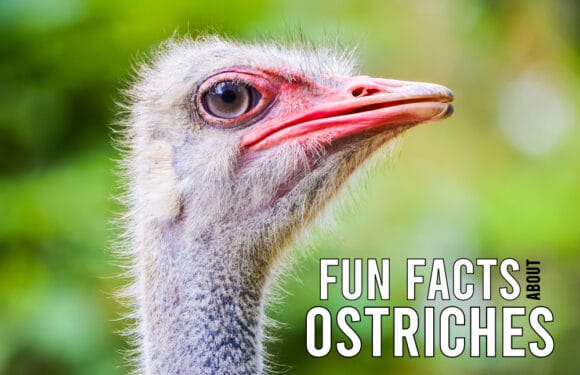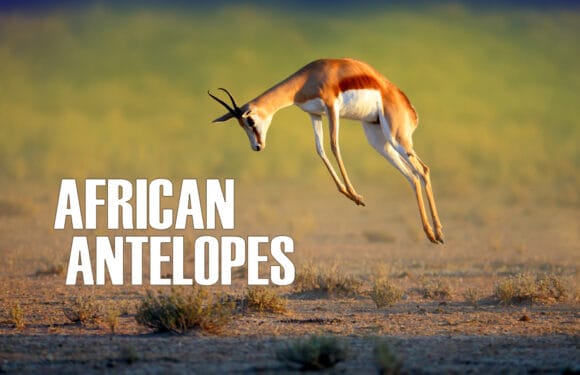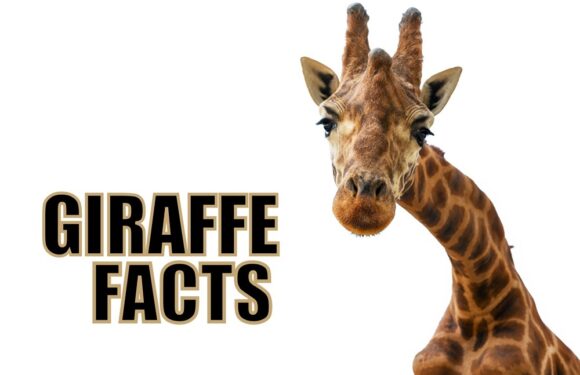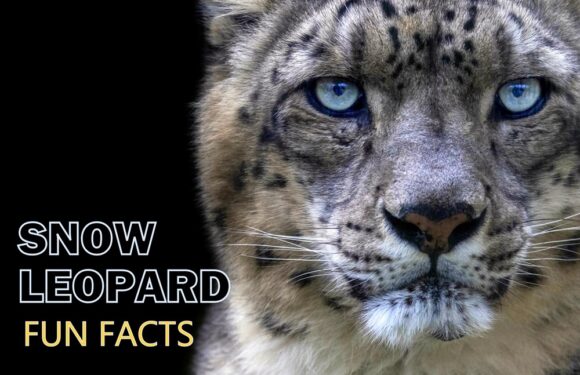
Animals exhibit a wide range of lifespans, from mere hours to millennia. The longevity of an animal is influenced by a variety of biological, ecological, and evolutionary factors. In this article, we’ll take a look at the oldest animals, with the longest lifespan.
Why Do Some Animals Live So Long?
Lifespan is often linked to an organism’s reproductive strategy. R-selected species (like insects) reproduce quickly and in large numbers, prioritizing rapid growth and reproduction over longevity. In contrast, K-selected species (like whales) invest more in fewer offspring, ensuring their survival through longer lifespans and extended parental care.
Larger species tend to have longer lifespans. This correlation is thought to be due to the fact that larger animals have slower metabolic rates and fewer natural predators. Species with a lower basal metabolic rate generally live longer. A slower metabolism reduces the production of free radicals and oxidative damage, contributing to a slower aging process. Additionally, species with slower heart rates generally live longer.

Other factors that increase lifespan include certain genetic components and stable environments. Genetics affects the efficiency of DNA repair mechanisms and resistance to diseases, both of which contribute to longevity, while environmental stability reduces stress and provides a consistent food supply.
Human Lifespan
Humans have a relatively long lifespan compared to many animals, typically living around 70-100 years. They are a classic example of a K-selected species. They have fewer offspring but invest significant time and resources in each one. This high parental investment ensures that offspring have a higher chance of surviving to adulthood. Humans are also relatively large mammals and have a slower metabolic rate.
Human longevity can also be attributed to: genetic factors that protect against aging, medical advancements that extend human life by preventing and treating diseases, and having minimal threats from natural predators. These factors collectively contribute to the long lifespan of humans.

The oldest verified person in history is Jeanne Calment of France, who lived to the age of 122 years and 164 days. She was born on February 21, 1875, and passed away on August 4, 1997.
The 21 Longest Living Animals in the World
Here is a list of the animals with the longest lifespan – the oldest animals on Earth.
21. Elephant: 80+ years

Elephants are the largest land animals on Earth. Adult African elephants can weigh up to 14,000 pounds (6,350 kilograms) while Asian elephants are slightly smaller, weighing up to 11,000 pounds (5,000 kilograms). They are known for their high intelligence, having large brains relative to their body size. Scientists believe that their cognitive abilities are comparable to those of primates, making them one of the smartest animals in the world. The saying “an elephant never forgets” holds some truth. Elephants have excellent memories and remember the locations of water sources, recognize individuals, and recall past experiences.
An elephant’s resting heart rate is typically between 25 and 35 beats per minute (BPM), which is much lower than a human’s resting heart rate of 60–100 BPM. Elephants typically live 60-70 years in the wild but can live into their 80’s in captivity with proper care.
20. European Eel: 85+ years

European eels have one of the most complex life cycles of any fish. They begin their life in the Sargasso Sea, a region of the North Atlantic Ocean. After hatching, the larvae drift with the ocean currents for up to three years, eventually reaching the coasts of Europe and North Africa. Here, they transform into glass eels and then into elvers as they migrate into freshwater rivers and lakes. In the wild, they typically live 15-20 years, but in some cases, they can live up to 85 years. Their longevity is partly due to their ability to enter a state of torpor during adverse conditions, slowing their metabolism and conserving energy.
19. Blue Whale: 90+ years

The blue whale is the largest animal ever known to have existed. Their heart alone can weigh as much as a car! Blue whales can grow up to 100 feet long and weigh as much as 200 tons. Despite their size, they are streamlined and can swim at speeds of up to 20 miles per hour (32 km/h). Blue whales are found in oceans worldwide, preferring deep, cold waters where krill are abundant. They undertake extensive migrations, traveling from the waters of the polar regions where they feed to warmer tropical waters where they breed and give birth. These migrations can cover thousands of miles each year.
18. Box Turtle: 100+ years

Box turtles are small to medium-sized terrestrial turtles found in North America. They are named for their hinged shell, which allows them to completely close up for protection. Box turtles can live a long time, often reaching 50 years or more in the wild, and some individuals have been known to live over 100 years in captivity. Box turtles are slow movers, which is why their defensive mechanism of “boxing up” in their shell is so vital for survival. Their slow pace is due to their terrestrial lifestyle and the structure of their limbs, which are designed more for digging and walking rather than swimming.
17. Saltwater Crocodile – 100+ years

The saltwater crocodile can live up to 70 years in the wild, with some individuals reportedly reaching over 100 years. In captivity, a saltwater crocodile at the Australia Zoo lived to be between 120 – 140 years old. This apex predator is the largest living reptile, with males capable of growing up to 20 feet (6 meters) in length and weighing over 2,200 pounds (1,000 kg). They are highly adaptable, inhabiting freshwater rivers, swamps, and open seas. Specialized glands allow them to regulate salt and survive in saline waters. Crocodiles have the strongest bite force in the animal kingdom.
16. Tuatara: 100+ years

Tuataras are reptiles endemic to New Zealand. They are often referred to as “living fossils” because they are the only surviving members of an ancient group of reptiles that thrived around 200 million years ago, during the time of the dinosaurs. Tuataras are nocturnal and thrive in coastal forests and islands. They have a unique third eye on top of their heads, which is thought to regulate their circadian rhythms. Tuataras grow very slowly and can live for over 100 years. Some individuals in captivity have lived over 110 years, making them one of the longest-living reptiles in the world.
15. American Lobster: 100+ years

American lobsters are large crustaceans found along the Atlantic coast of North America. They are known for their strong claws, which they use for hunting and defense. Lobsters inhabit rocky, coastal waters, where they hide in crevices and under rocks. They are omnivores, feeding on fish, mollusks, and algae. Lobsters grow by molting, a process where they shed their old exoskeleton and form a new, larger one. Young lobsters molt several times a year, while older lobsters may molt only once every few years. American lobsters are among the longest-living crustaceans, with some individuals living over 100 years. Their longevity is attributed to their ability to continually grow and regenerate body parts, along with their relatively slow metabolism.
14. Lake Sturgeon: 150+ years

Lake sturgeons are ancient fish species found in freshwater lakes and rivers in North America. Their lineage dates back over 150 million years, which makes them one of the oldest fish species still in existence today. They have remained relatively unchanged since the time of the dinosaurs. Lake sturgeons are among the largest freshwater fish in North America. They can grow up to 7 feet (2 meters) long and weigh over 200 pounds (90 kilograms). Lake sturgeons have long lifespans, often living over 100 years. Females generally live longer than males, with some individuals reaching ages of 150 years or more. Their longevity is linked to their slow growth and late sexual maturity.
13. Orange Roughy: 150+ years

Orange roughies are deep-sea fish found in the Atlantic and Indo-Pacific oceans. They have a bright orange color and a rough texture, which gives them their name. Orange roughies inhabit depths of up to 5,900 feet (1,800 meters). They are slow-growing and long-lived, with individuals reaching up to 150 years old. These fish have a slow growth rate and do not reach sexual maturity until they are about 20-30 years old. This late maturity, combined with their infrequent spawning, makes them particularly vulnerable to overfishing.
12. Galápagos Tortoise: 150+ years

Galápagos tortoises are among the largest tortoises in the world. They can weigh up to 900 pounds (408 kilograms) and measure over 4 feet (1.2 meters) in length. Their massive size helps them store more water and fat, enabling them to survive long periods without food or water. They are herbivores, primarily feeding on grasses, leaves, and cacti. Galápagos tortoises are known for their slow movements and long lifespan. They can live well over 100 years, with some individuals possibly reaching 150-200 years in the wild. In captivity, their lifespan can be even longer.
11. Geoduck: 168+ years

Geoducks are one of the largest burrowing clams in the world. They can weigh over 2 pounds (0.9 kilograms), and their siphons can stretch up to 3 feet (0.9 meters) long. The name “geoduck” is pronounced “gooey-duck.” The name is derived from a Native American language which means “dig deep.” Geoducks are incredibly long-lived, often reaching ages of 100 years or more. Some individuals have been known to live up to 168 years, making them one of the longest-living animals in the marine environment. They inhabit sandy or muddy substrates, where they filter feed on plankton.
10. Bowhead Whale: 200+ years

Bowhead whales are baleen whales found in the Arctic and sub-Arctic regions. They are among the largest whales, with adults reaching lengths of up to 60 feet (18 meters) and weighing between 75 and 100 tons. Bowhead whales have the thickest blubber of any whale species. This, along with their large size, helps them survive in the harsh Arctic environment by maintaining body heat. They have a distinctive bow-shaped head which they use to break through sea ice. Bowhead whales feed on small crustaceans and other planktonic organisms.
9. Red Sea Urchin: 200+ years

Red sea urchins are echinoderms found along the Pacific coast of North America, from Alaska to Baja California. They have a reddish-brown shell covered in long, sharp spines that provide protection against predators. These spines can move independently, helping the urchin navigate and interact with its environment. Red sea urchins inhabit rocky reefs and kelp forests, where they feed on algae. They are known for their longevity, often living over 200 years. Red sea urchins are harvested for their roe, which is considered a delicacy, particularly in Japanese cuisine where it is known as uni.
8. Rougheye Rockfish: 205+ years

Rougheye rockfish are deep-water fish found in the North Pacific Ocean. These fish can grow up to 38 inches (97 cm) in length and can weigh up to 14 pounds (6.4 kg) at their largest. Rougheye rockfish prefer rocky habitats and are often associated with underwater structures such as reefs and boulders. They are named for the small spines located on the lower rim of their eyes. They have a reddish-brown color and spiny fins. Rougheye rockfish are one of the longest-living fish species, with individuals known to live up to 205 years. They are slow-growing and late to mature.
7. Koi fish: 220+ years

Koi fish are a domesticated and ornamental variety of the common carp. Originating in East Asia, particularly China and Japan, koi have been bred for their colors and patterns for centuries. In Asian culture, they are symbols of luck, prosperity, and good fortune. They are often kept in ponds and gardens. Koi are known for their longevity. They can live for 25-35 years on average, but some individuals have been known to live for over 200 years. Hanako, a famous koi in Japan, lived to be 226 years old.
6. Freshwater Pearl Mussel: 280+ years

Freshwater pearl mussels are among the longest-living invertebrates, with lifespans that can exceed 280 years. Their longevity is attributed to their slow metabolism and the cold, clean waters they inhabit. Freshwater pearl mussels are found in clean, fast-flowing rivers and streams in Europe and North America. They have a dark, elongated shell and produce pearls, although these are not as commercially valuable as those from marine oysters. The life cycle of freshwater pearl mussels is fascinating. After fertilization, females release larvae that must attach to the gills or fins of a host fish (typically salmon or trout). After several weeks of development, they drop off and settle into the riverbed, where they grow into adult mussels.
5. Greenland Shark: 500+ years

Greenland sharks are large, slow-moving sharks found in the cold waters of the North Atlantic and Arctic Oceans. They have a dark, mottled appearance and can reach lengths of up to 24 feet (7.3 meters). Greenland sharks grow at an exceptionally slow rate, estimated at about 0.4 inches (1 cm) per year. This slow growth rate is one of the reasons for their incredible longevity. They reach sexual maturity at around 150 years of age. Scientists estimate that the Greenland shark lives at least 250 years, possibly over 500 years!
4. Ocean Quahog: 500+ years

Ocean quahogs are bivalve mollusks found in the North Atlantic Ocean. These clams inhabit the seabed, buried in sediment, where they filter-feed on plankton. Ocean quahogs can live over 500 years. They grow only a few millimeters per year, and it can take them several decades to reach maturity. Their growth rings, similar to those in trees, can be used to determine their age. Their extreme longevity is attributed to their slow metabolism and stable, deep-sea environments. The oldest known ocean quahog was estimated to be 507 years old, earning it the nickname “Ming” because it was born during the Ming Dynasty.
3. Black Coral: 4,000+ years

It’s hard to fathom, but there are animals that live thousands of years. Black corals live for over 4,000 years, making them some of the oldest living marine organisms. These deep-sea corals are found in oceans worldwide, particularly in the waters off Hawaii and the Mediterranean.Despite their name, black corals are not always black. The living tissue of black coral can be various colors, including white, green, yellow, or red. However, their skeletons are dark or black, which gives them their name. The skeleton is made of a hard material that resembles keratin. The corals thrive in deep, nutrient-rich waters where they filter feed on microscopic plankton.
2. Antarctic Glass Sponge: 15,000+ years

Antarctic glass sponges can live for over 15,000 years, making them some of the longest-living animals on Earth. They are simple, porous organisms found in the cold, deep waters of the Antarctic Ocean. The water temperatures in their habitat can drop below freezing, yet Antarctic glass sponges are well adapted to survive and grow in these extreme conditions. They have a very slow metabolism, and the cold, stable environment reduces metabolic rates, leading to slower aging. Researchers are particularly interested in these sponges because studying these organisms can provide insights into the biological mechanisms of aging and cellular maintenance.
1. Immortal Jellyfish – Forever

The “immortal jellyfish” is a tiny jellyfish species that can potentially live forever. This jellyfish can transform its adult cells into juvenile cells. This process, called transdifferentiation, effectively resets its life cycle, theoretically enabling it to bypass death due to old age. It starts life as a free-swimming larva, then settles on the seafloor and develops into a polyp. A polyp can many produce many jellyfish through asexual reproduction. Once a jellyfish reaches adulthood, it can revert to the polyp stage, allowing it restart its life cycle indefinitely. The immortal jellyfish is primarily found in the Mediterranean Sea and off the coast of Japan.





























































